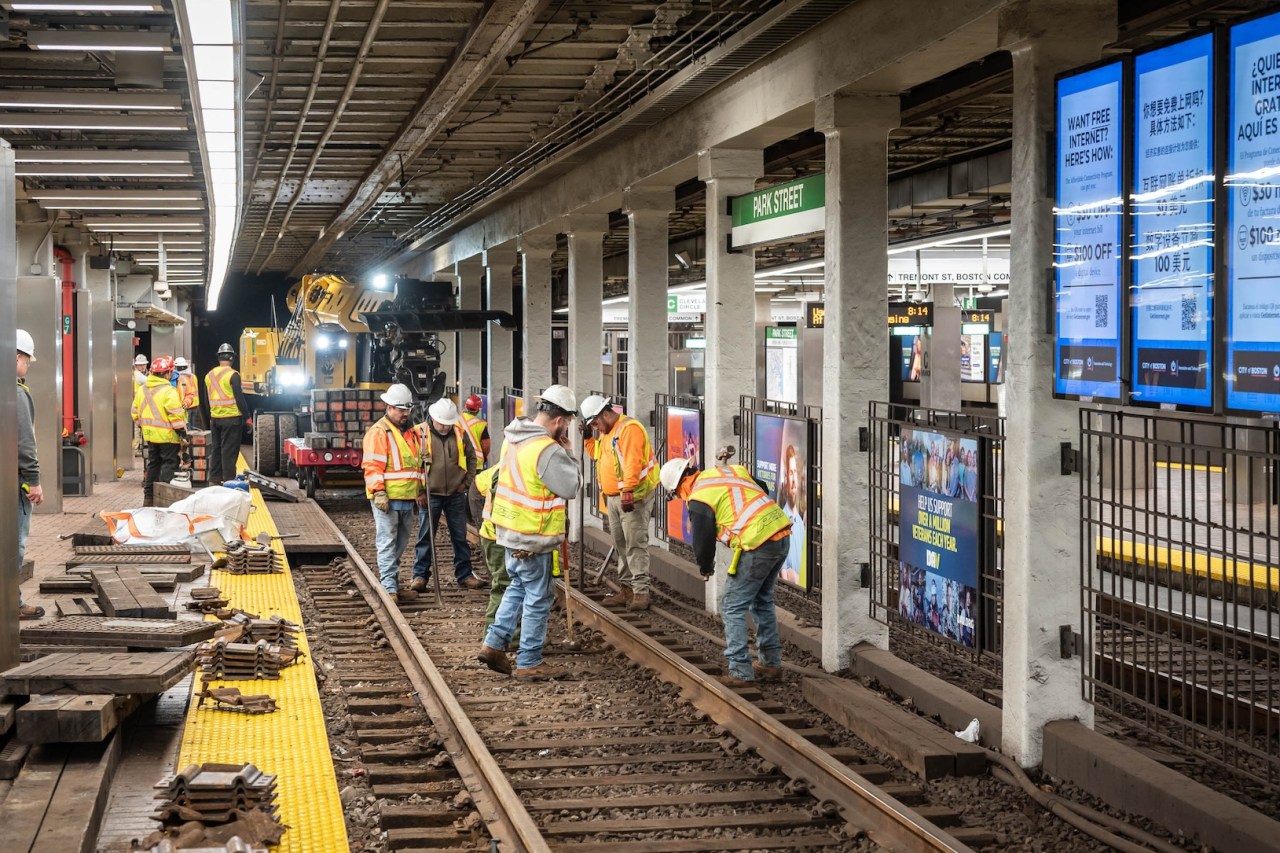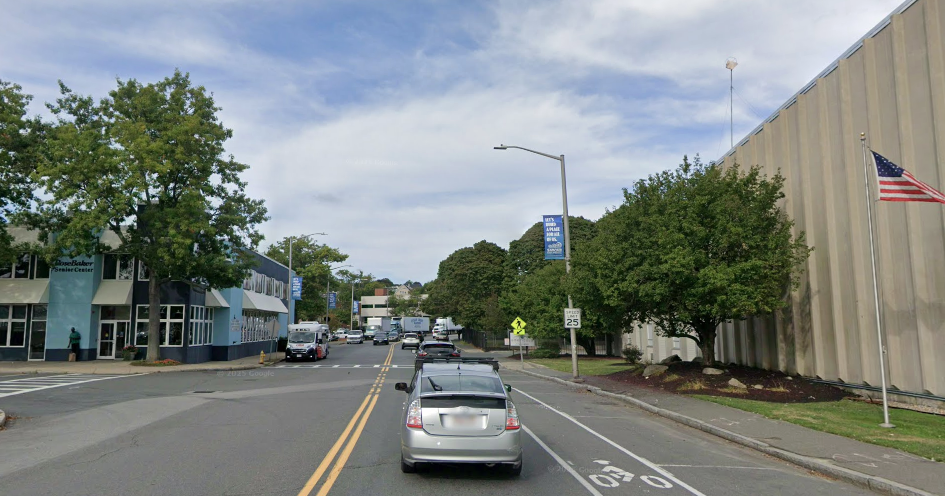Two weeks ago, the MBTA reopened the central segment of the Green Line between the Fenway and downtown Boston after a 23-day closure that repaired old track and removed 16 safety-related speed restrictions.
That work followed up on a shorter 9-day closure for work on the same segments of the Green Line in early December that reportedly lifted 12 other slow zones.
When the MBTA did similar work on the Ashmont branch of the Red Line in October, riders immediately felt the difference.
Average trip times on the Red Line from the JFK/UMass station to Ashmont plummeted from 17 minutes in September to under 8.9 minutes in the first week of November.
However, according to vehicle location data compiled by TransitMatters, the changes on the Green Line have been much more subtle.
In November 2023, the median Green Line travel time from North Station to Kenmore was 18 minutes and 56 seconds.
For the first 11 days of February, the average travel time on that same segment had been reduced to a 17 minutes and 43 seconds – just a little better than one minute faster, with an average speed of just 9 miles per hour.

Last week, StreetsblogMASS reached out to the MBTA to find out why riders aren't seeing as much of a difference on the Green Line as they did when the Ashmont branch reopened last fall.
"There are unique circumstances on the Green Line that make travel times less noticeable than other lines," explained Lisa Battiston, an MBTA spokesperson.
Those circumstances include:
#1: The stations are really close together
From North Station to Kenmore Square, the Green Line covers about 2.7 miles and makes 9 stops.
That means that the average distance between its stations is just over a quarter-mile, and if you're riding the Green Line through downtown Boston, you'll probably spend a fair amount of the trip waiting for passengers to get on or off your train, instead of actually moving through the tunnel.
By contrast, the Ashmont Branch of the Red Line runs about 2.9 miles between JFK/UMass and Ashmont, with just 5 stops.
This segment of the Green Line also gets a lot of traffic: all four branches converge in the tunnel through downtown Boston, and during the busiest commuting hours, trains arrive as little as one minute apart from each other.
Any kind of unexpected delay at these downtown stations – a medical emergency, a mechanical issue, or even just someone blocking the doors for a few seconds – can send slowdowns rippling throughout the rest of the Green Line.

#2: The drivers are human
MBTA officials have told StreetsblogMASS that operators have a lot more discretion about how fast they go on the Green Line compared to the Red, Orange, and Blue lines.
That discretion leads to a lot of variability in speeds, depending on who's driving.
The Red, Blue, and Orange lines – the so-called "heavy rail" system of the rapid transit network – all have signal systems and hard-wired speed limits that prevent trains from exceeding the allowable speed on any given segment of track.
The Green Line, by contrast, is a light rail system where operators have direct control over how fast or slow the train goes.
As the TransitMatters speed data show, there's a lot of variability in travel times on the Green Line. Since it reopened at the beginning of this month, roughly a quarter of trips from North Station to Kenmore were faster than 16.5 minutes, but a similar number of trips took longer than 20 minutes.
#3: Even at full speed, the Green Line is just slower
MBTA officials also told StreetsblogMASS that the maximum speed limit on the Green Line throughout much of the central subway tunnel is 25 mph, and because the stations are so close to each other, most Green Line trains only hit that speed limit for short bursts before they start slowing down for the next stop.
So as a practical matter, removing a 10 mph speed restriction on the Green Line to raise speeds to 25 mph will have less of an impact than lifting a 10 mph speed restriction on the Red, Orange, or Blue Lines, where trains can run up to 40 mph and generally cover longer distances between stops.
Battiston stressed that even though there are lots of reasons the Green Line is slow, the repair work being done this winter will still remove a major source of hassles for Green Line riders.
"Riders will experience a more reliable trip on the Green Line with fewer unplanned service disruptions related to old tracks, old infrastructure, signal issues, or power problems," wrote Battiston. "Riders will also be provided with a safer ride as a result of this state of good repair work."






